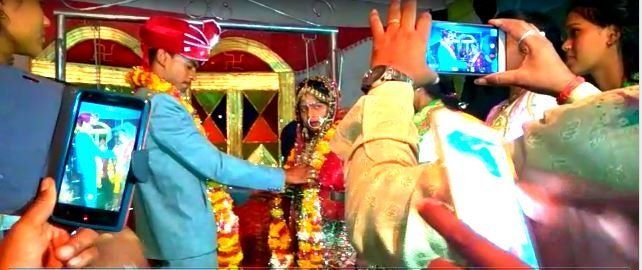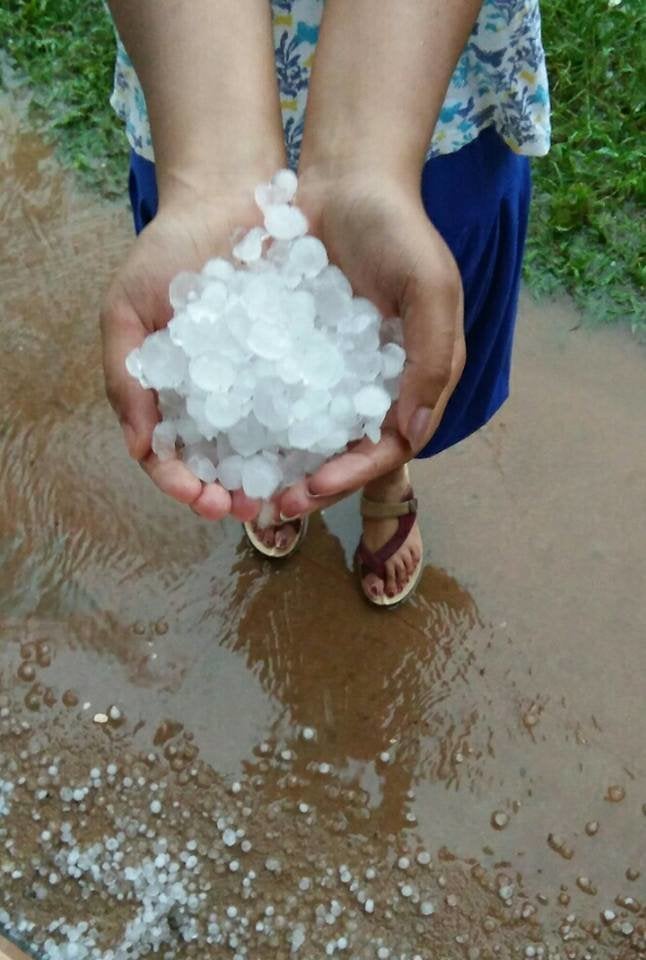In the social churn we're all familiar with, time has mysteriously shortened and the leisurely pace of many a habit or ritual has become the stuff of urban legend. Or rural. In Bundelkhand, where time seems to stand still in so many respects, the Great Indian Wedding has ushered in the kind of change perhaps nobody could have predicted.
Here're the top five social change markers of a typical Bundelkhand marriage.
1. DJ Waley Babu
Then
From the greeting of the baraat right through till the actual phere around the sacred fire, the ladies of the house would sing traditional songs right through. Even as the baraatis ate their dinner, there would be constant song requests that the matriarch and her sisterhood would indulge.
And this customary exercise of vocal chords would be accompanied with been-baaja and the infectious dhol that served as the perfect soundtrack through it all.

Now
One word: Bollywood. The DJ and his deck have replaced it all in one swoop. From the dvaar ceremony—when the baraat enters the girl's house—to the bidaai, when the bride leaves for her sasural, there are songs befitting every shaadi mood that are blared out from loudspeakers—it's preferred. The manic dancing is proof of life!
Delicate hand movements and light hip shaking... have been replaced with full-on Bollywood jhatkas.
A not-so-unwelcome by-product of this phenomenon is the marked difference in how women dance. "Ek khulaapan aa gaya hai (There is an openness now)," says KL chief reporter Meera Devi, as she recalls the delicate hand movements and light hip shaking of her aunts that have been replaced with full-on Bollywood jhatkas of her cousins! Because, after all, how does one be coy to "Baby Doll Main Sone Di?"
2. Buffet system (and paneer!)
Then
Days upon days of preparation to feed a bevy of some 200-odd expected guests—all cooked in-house. If you were a female friend or family member, you'd enter the wedding premises and roll up your blouse and get right down to sweaty poori-rolling. An archetypal baraati's plate? Pooris, a dry preparation of potato and pumpkin, a jackfruit curry, mango pickle, mirch ka buknu, salt, lauki raita, lauki barfi, sugar and boondi. All served hot, except for the raita and pickle of course.
Now
The buffet system has overtaken the Bundeli thaali. In the words of Meera Devi, "By the time the guests get to the food, it's all cold. The poor halvaais are dozing off." Plus, there is the curious addition of the paneer ki subzi that has become an unspoken mandatory dish, although it was never a typical delicacy in these parts.

3. The 24-hour baraat
Then
Several mini rituals spread through the span of days and weeks—depending on which generation you speak to—mapped a real wedding. There was the bhaaji khilaana ceremony, in which the ladies from the girls' side fed the groom with their own hands as a mark of affection, and the naachu rasam that translated as the haldi ceremony for the bride, to mention a few. Plus, there were several good omens and traditions that were followed, prime among which was the decoration of the bailgaadi (bullock cart) that would accompany the bride to her sasuraal. The more the bailgaadis, the better of course, denoting prosperity, and the bells tied to them contributed to the soundtrack.
The phone camera has been the real game-changer of a Bundeli shaadi.
Also, there was the bhoot ka naach—a customary dance mostly planned and executed by the tallest member of the family, a chacha or a mama who would don a black mask and pretend to be a ghost. O rather, a dancing ghost.
Now
While most of the customs are still followed to an extent—their duration shortened—what has usurped centre-stage from the baraat-entry and the actual mandap is the jaimaal or garlanding ceremony. Never a part of the Bundeli shaadi-scape, it is now the moment everything builds up to, the moment where it all becomes real. All eyes are on it, and that means the photographer and videographer too. Meera Devi noticed a certain style in which the groom extended his hand towards the bride as she made her way towards the stage or takht for the jaimaal. "Bollywood style mein," of course.
Older generations speak with considerable nostalgia, of entire baraat processions settling down for days and at times weeks together in the bride's kasba. But the chaubees ghante ki baraat has replaced it all. For those who can afford it, the tradition often followed is that the groom's family checks into a local motel for 24 hours.
The one ritual that has stood the test of time is the bahlol—a women-only event reserved to ease the tension and any lingering sense of sadness after the bride's bidaai—brimming over with sexual banter and the kind of innuendoes that'll have your standard bachelorette parties blushing!

4. Sabke dil par chhana hai, beauty parlour jaana hai!
Then
As part of the nachu ritual, the bride was usually dressed at home, with the younger bhabhis and sisters and a friend or two taking charge. She usually wore a traditional cotton sari that was made from cotton bale soaked in turmeric—a ritualistic form of beautifying. Her jewellery, in particular the mangalsutra, would be silver. A traditional arm ornament, called haraiyya, was usually her only other adornment.
Now
The beauty parlour is a permanent site of excitement during this, arguably, most important transition of a girl's life, it would seem. Hair, make-up, perfect smiles, selfie smiles, the right angles—it's all up for debate and discussion in the beauty parlour, a semi-sacred space where vital decisions are made. The jewellery too is key—aligned with the exact hues of reds and pinks of her lehenga, the designs of which are the stuff of local tailor's businesses. That yellow cotton sari is now reserved for phere time only.
And for all the skewed gender prejudices rural UP trembles with, we now have the latest entrant into the beauty zone. The groom goes where no man has gone before. From skin-lightening treatments that assure a glow on the face on his big day, to instant pedicures, the boy about to get married is making a few rounds of the local salon too. Even the mehndi that young boys have started donning for their weddings these days—"it's a new-fangled thing."

5. Photography/videography
Then
Perhaps the biggest marker of change has been in the documenting of the event. And not being able to hunt out too many old photographs of weddings in Banda and Mahoba from even 10-15 years ago is, unarguably, the biggest statement of how the phone camera has been the real game-changer of a Bundeli shaadi.
Now
Everything and everyone is camera-friendly now. What else makes life's most life-changing moments real? The buffet, the make-up, the parlour visits, the bedecked horses (and camels too!), the jaimaal, and even the dancing have, after all, gained the importance they have only because of the incessant clicking of the ubiquitous phone camera.

For more snapshots of a Bundeli-stye wedding, click here.
